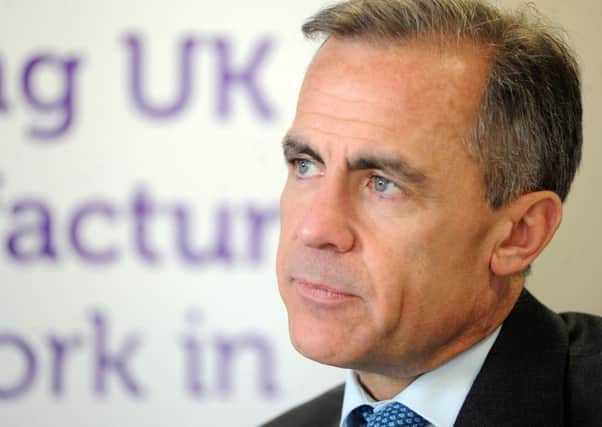Bank of England to deliver outlook


Policy makers will also indicate their views on the path of inflation after it fell to zero in February and March - and whether they still believe it will turn negative or bounce back more quickly than expected.
Some economists think the Bank will have to revise down its forecast for 2.9 per cent GDP growth this year after the Office for National Statistics (ONS) reported that expansion in the first quarter slumped to 0.3 per cent.
Advertisement
Hide AdAdvertisement
Hide AdBut the Bank has described some of the official data as “volatile and susceptible to revision” and been more bullish - with this view likely to be bolstered by new figures upgrading the performance of industrial production in the first three months of 2015.
The quarterly Inflation Report will be closely scrutinised for clues on how interest rates are likely to respond - and whether the possibility of a hike from 0.5 per cent is on the cards this year or is pushed back further into 2016.
An optimistic forecast on growth may mean the Bank thinks inflation, currently at zero, will rise more quickly than expected and therefore that it has to increase interest rates earlier to keep it from overshooting its 2 per cent target a couple of years from now.
A more pessimistic approach to a potential slowdown may suggest policy makers are more inclined to leave the cost of borrowing on hold for as long as possible to avoid any chance of jeopardising recovery.
Advertisement
Hide AdAdvertisement
Hide AdHoward Archer, of IHS Global Insight, said policy makers were likely to take the view that the slowdown had been driven by business and consumer caution ahead of the general election, but still added that the Bank would have to downgrade its 2015 GDP forecast.
For now, the Bank must also contend with the danger of inflation being too low, since it remains more than 1 per cent less than its target - meaning governor Mark Carney must write a second letter of explanation to the Chancellor, three months after the first.
The Bank’s chief economist Andy Haldane recently floated the likelihood of a rates cut to try to stave off a damaging spiral of falling prices, though he seems to be a lone voice among policy-makers.
Mr Carney has acknowledged that the ability to cut rates is in his armoury if deflation persists, but has played down the possibility of having to use it.
Advertisement
Hide AdAdvertisement
Hide AdThe Bank’s Monetary Policy Committee (MPC) has said it expects inflation, which has been under pressure amid the sliding cost of oil and the supermarket price war, to turn negative “at some point in the coming months”.
But members last month noted that another cause of low inflation - the strength of the pound making imports cheaper - might have been feeding through to CPI more quickly than expected, meaning that a bounce-back could also come sooner.
Meanwhile, the price of oil has recovered. The cost of a barrel of Brent crude climbed to nearly 70 US dollars recently, having slumped to almost 45 US dollars earlier in the year.
Samuel Tombs, senior UK economist at consultancy Capital Economics, said this has improved the chances that inflation will not turn negative, or that it only does so for a month or two.
Advertisement
Hide AdAdvertisement
Hide AdInvestec’s Victoria Clarke said the inflation report would be even more closely watched than normal because MPC members had stayed silent on their thinking in recent weeks in the run-up to the election.
There was also the question of whether the election result changed the outlook for monetary policy, she added.
“Our view is that no it does not, at least not materially. Some are talking about a greater degree of austerity, given that the Conservatives were re-elected with an overall majority.
“However, political momentum at the moment suggests we could see a softening in the pace of spending cuts over the next three years.”